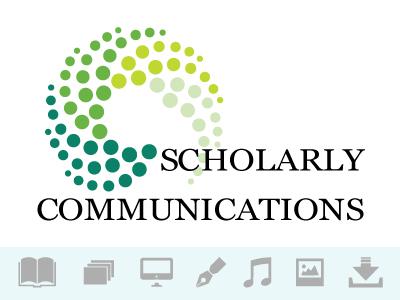Publishing Models and Open Access

Two catalysts of the advent of open access include decreasing library budgets and increasing publisher fees. Consequently, publishers and libraries are experimenting with various fee and payment models to better serve their respective customers. One horizon library payment model is called the Sponsoring Consortium for Open Access Publishing in Particle Physics (SCOAP3). SCOAP3 consists of a consortium of libraries, funding agencies, and research centers located in over two-dozen countries that are aggregating funds to pay publisher costs to enable selective High-Energy Physics journals to become available via gold open access. Subsequently, publishers of these journals offer lower subscription fees to the contributors who help subsidize the SCOAP3 endeavor. Further, the articles published in these High-Energy Physics Journals are licensed with a CC-BY Creative Commons license, and thus this license alerts potential users that these articles may be further distributed, tweaked, used for commercial or non-commercial purposes, used for any educational endeavor (making paper or digital copies for students…), or for any other purpose as long as proper attribution is given. Articles that are published using SCOAP3 funds are also placed into the SCOAP3 Repository, which creates even greater reliable access to valid information.
Cengage and McGraw Hill
Publishers are also experimenting with new conduits of offering educational information. I recently attended a luncheon sponsored by Cengage Learning at the University of North Texas Center for Learning Enhancement, Assessment, and Redesign (CLEAR). At this luncheon, Cengage introduced a couple of products to meet the changing needs of students. In displaying this new product, Cengage cited research that claimed many students simply cannot afford to purchase expensive print textbooks, and even if text books are purchased, students rarely read the content inside. Therefore, Cengage is experimenting with an interactive digital interface that offers some text, interfaces similar to Second Life where students can construct items, digital venues in which students may participate in augmented reality science labs, and digital locations where students may interact with other students online.
I attended another luncheon with CLEAR that was sponsored by McGraw Hill. McGraw Hill also is experimenting with interactive digital content called McGraw Hill Connect that is subject specific and that can be implemented for one or two academic periods. Such content offers interactive videos, audio, and text; and is offered in lieu of print textbooks. It additionally proffers periodic reviews and quizzes to help students ensure they know materials before taking an exam, and the quizzes also assist professors in remaining cognizant of student progress.
Which is the better approach?
These separate approaches do not equally meet the needs of information seekers. SCOAP3, although a gold open access platform, is an innovative way to help users effectively locate needed information. Although a truly green open access platform is preferred, SCOAP3 provides an acceptable compromise that helps create a wider dissemination of High-Energy Physics information, especially with each article being deposited into the SCOAP3 Repository. Also, by using Creative Commons licenses, potential users are immediately cognizant that they may use this content for most any purpose as long as they give proper attribution to the author.
Although the Cengage and McGraw Hill approaches are both interesting, neither method really encourages the widespread dissemination of needed information. Realizing this publisher created content is not paid for by a consortium such as SCOAP3, the only individuals who can view this content are those registered in a specific class at UNT, and those registered students must have a password to view and interact with the content. The Cengage and McGraw Hill content also are not licensed with a Creative Commons license, which further prevents the widespread flow of dissemination. Additionally, an interesting note brought up by a representative at CLEAR is that currently less than one percent of the students at UNT purchase digital content at the UNT bookstore. If students’ materials are offered via digital venues, a large majority of UNT students supposedly choose not to purchase it. The publishers at the luncheon countered this statistic and suggested that a majority of students nation-wide are not purchasing print content either. It seems to me, both pieces of evidence that suggest students are not purchasing course required content (whether print or digital) support the creation of more green open access platforms that deliver students gratis, easily located, valid and reliable information. This is the type of access for which the Coalition of Open Access Policy Institutions (COAPI) continues to advocate, and I think it is the type of access we all should continue to demand. Perhaps if such content were more readily available, then regardless of the format, students would be more likely to use the content and better their educational opportunities.

